How to choose the right LMS for your compliance training

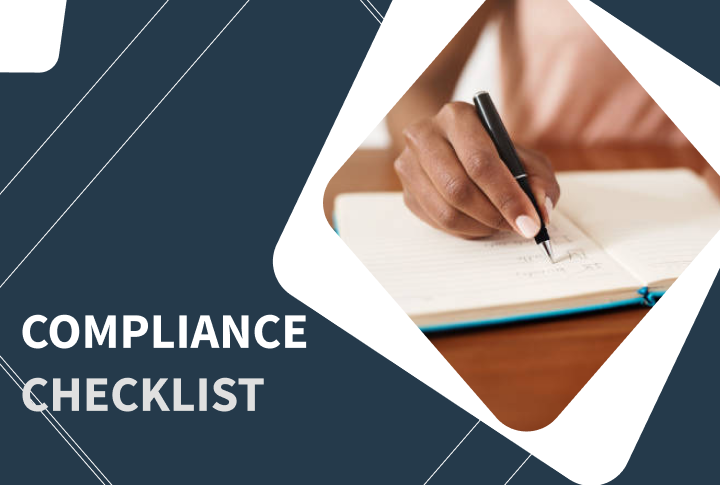

Compliance training specifics and requirements
Compliance training is unlike any other form of workplace training. For employees, it is mandatory and often run periodically. For companies, it is a legal requirement that needs to be properly tracked and recorded.
If an incident were to happen at work, companies need proof that sufficient precautionary measures, including employee training, were taken to avoid such incidents
Running compliance training means you are running organisation-wide training on a regular basis. The aim is to achieve high completion rates, and to keep track and report on who has completed what.
There is a number of things you should consider when developing compliance training (make sure to check our hands on guide to compliance training too), but the most important parts are the learning content and the LMS system that helps get that content delivered and execute the training.
If properly vetted, a Learning Management System (LMS) can be an effective tool in helping to provide a systemised and formal approach.
How the right LMS can help you run the compliance training
An LMS simplifies compliance training operations by enabling the delivery of organisation-wide training in an easy-to-access, easy-to-manage and easy-to-track way.
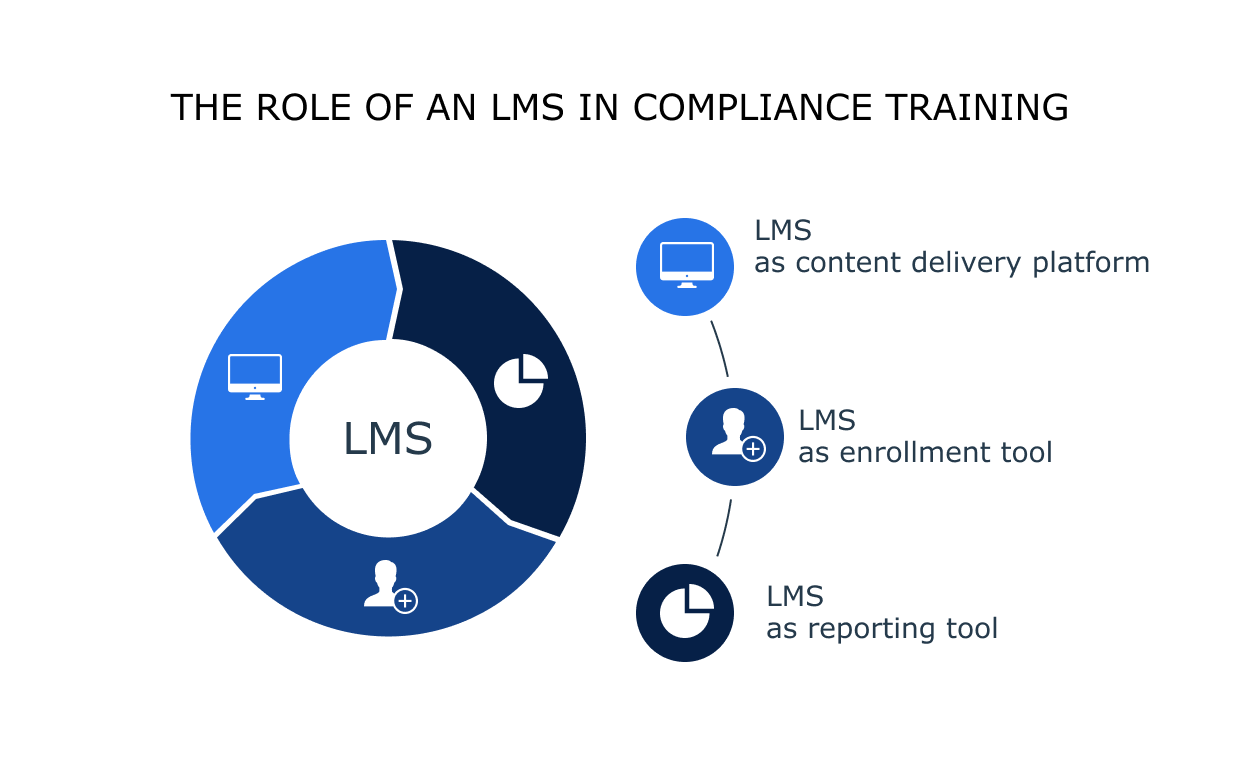
Providing frictionless compliance training for employees
Compliance training demands high completion rates.
However, from the employee’s perspective, there is a lack of obvious benefits. Moreover as it is mandatory and often comes with regular refreshers, employees can see it as a burden.
Since it is mandatory training, it is only fair to make it as easy and painless as possible for employees to complete the training. Employees will see their work as a higher priority than compliance training, so they should be able to complete the training quickly and efficiently, allowing them to return to their work as soon as possible.
The LMS should help in delivering compliance training in the following ways:
1. Enabling easy access to learning content
The easier the training can be accessed, the better.
The first impression a learner will have of any LMS is the login process. If this is convoluted or frustrating from the get-go, the learner will become discouraged to take the training before it has even started. A good LMS is one that makes the login process simple and convenient. Ideally, it does this by offering different login options, and enables the use of Single-Sign-On (SSO).
Further on, different employees will have different ways in which they find the most convenient to access training, so in limiting the ways an employee can access the training, you may be limiting the amount of people who will access it.
2. Providing user-friendly learning environment
It is not a reasonable request to think that learners will invest their time in getting to grips with a LMS. Instead, LMSs should be simple and straightforward to use from the get-go, and having an intuitive user interface should be a given.
Further on, it is wise to use company branding on your LMS. Not only does it bring familiarity to the learning environment, but it also provides the employee with comfort that the LMS has been properly vetted before being distributed.
3. Making compliance training accessible for people with reading disabilities or visual impairments
It is estimated that 1-in-6 adults struggle with reading due to learning disabilities such as dyslexia or visual impairments. It is therefore reasonable to suggest that there are employees in your organisation who will not feel comfortable with completing training that requires a substantial amount of reading.
As compliance training is mandatory, it is your responsibility to ensure that the learning is accessible to everyone. This can be achieved by choosing an LMS that has the option for different accessibility modes, such as text-to-speech or narration.

When it comes to learning content, there are several ways of making it accessible to people with reading disabilities or visual impairments. This is another story, but one way is by enabling content audio narration in your learning content.
If you’re worried about all the things that could go wrong when accessing the training, then read our checklist on the 11 most common points of friction at accessing the training.
Hassle-free management of compliance training through an LMS
As compliance training is both mandatory and periodical, it feels like a never-ending task when it comes to managing it. That feeling is heightened for large organisations with lots of employees.
The right LMS should simplify managing your compliance training by:
1. Syncronising your employee database with LMS user database
The best case scenario here is that your LMS’s data regularly and automatically updates with your employee records. This includes deactivating leavers, adding newcomers and making note of those who are on extended leave.
However if this is not the case, the LMS should ensure that any manual updates can be done easily, in bulk and quickly.
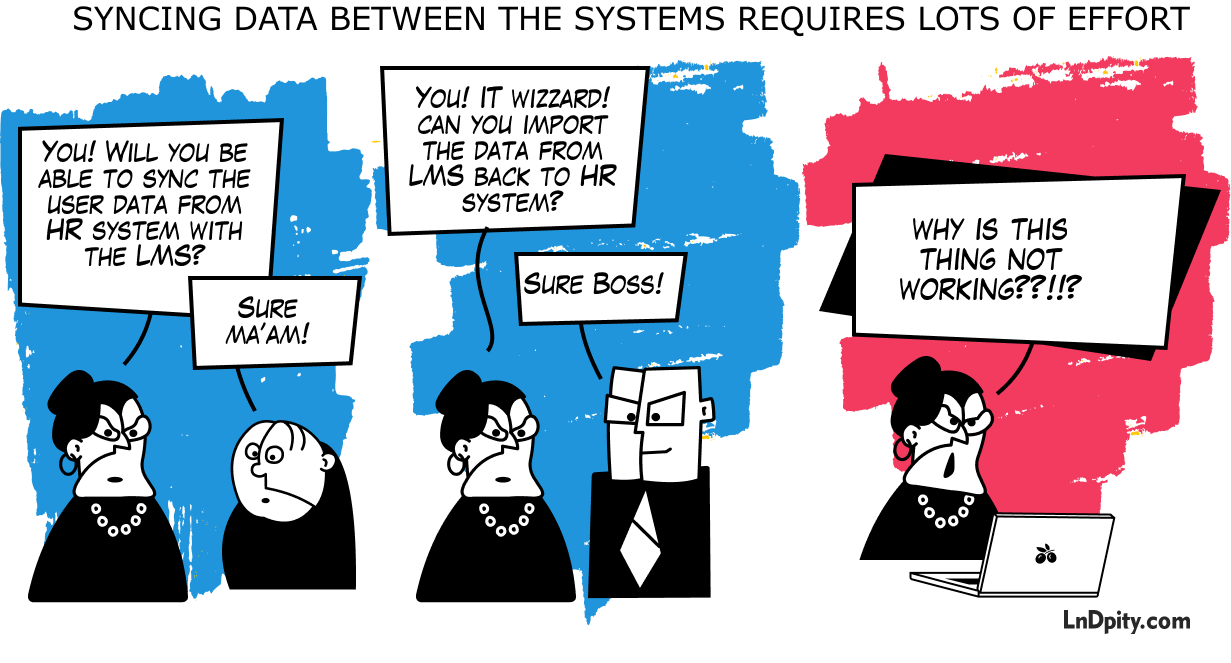
2. Enabling efficient assignment of relevant content
A good LMS will allow you to organise different groups of employees into logical user segments according to their job functions, departments, locations etc. This will minimise the complexities of assigning every employee a single item of training. For example, you could target different training content towards different departments by simply assigning the training to the entire segment group.
Another way to efficiently assign learning content is through the creation of learning paths. This allows you to assign a group of tasks that need to be completed. Once one item of training is completed, the employee is automatically assigned the next step in their learning path.
Ideally your LMS enables you to combine both approaches. For example, IT and marketing will have to complete general GDPR compliance training, but they will also need vastly different training on the specifics of how GDPR affects their day-to-day.
Therefore it makes sense to create different learning paths – both starting with awareness training – and then continuing with different specialist courses. These learning paths are then assigned to employees in accordance to their department segment.
Nonetheless some LMSs can fully automate your tasks related to content assignment. One of the ways of how this is done is through setting up certain criteria which dictates when learning should be issued. For example, if an employee completed a GDPR course 11 months ago, they are automatically assigned a GDPR refresher course.
Reasonable levels of automation in compliance training
As compliance training is periodical and usually organisation-wide training, there is a strong need for task automation. However, going head first into auto-pilot has its downfalls too.
Organisational structure may change, people may be transferred or promoted, and there is always a chance that someone may be missed when training is issued.
It’s always good to know where you stand, so we have a few suggestions:
- Regularly check-in on who is eligible for refreshers, if there are any newcomers that need to be enrolled in awareness courses or if there are functions that need specialist training.
- Once the above have been identified, assign the training manually.
- When you can be certain that everyone is on the right learning path, let the system take over. Use your LMS as a way to help employees stay on track by sending automated reminders, unlock the next mandatory tasks and update line managers about the progress their team is making with the training.
3. Helping to achieve high completion rates
Your LMS can be a key tool in achieving high completion rates for two primary reasons.
Firstly, it does the chasing for you. Automated and personalised email reminders can be a massive benefit when it comes to notifying employees about their learning progress and reminding them when they are off-track. A well-chosen LMS can help you deliver your communication plan.
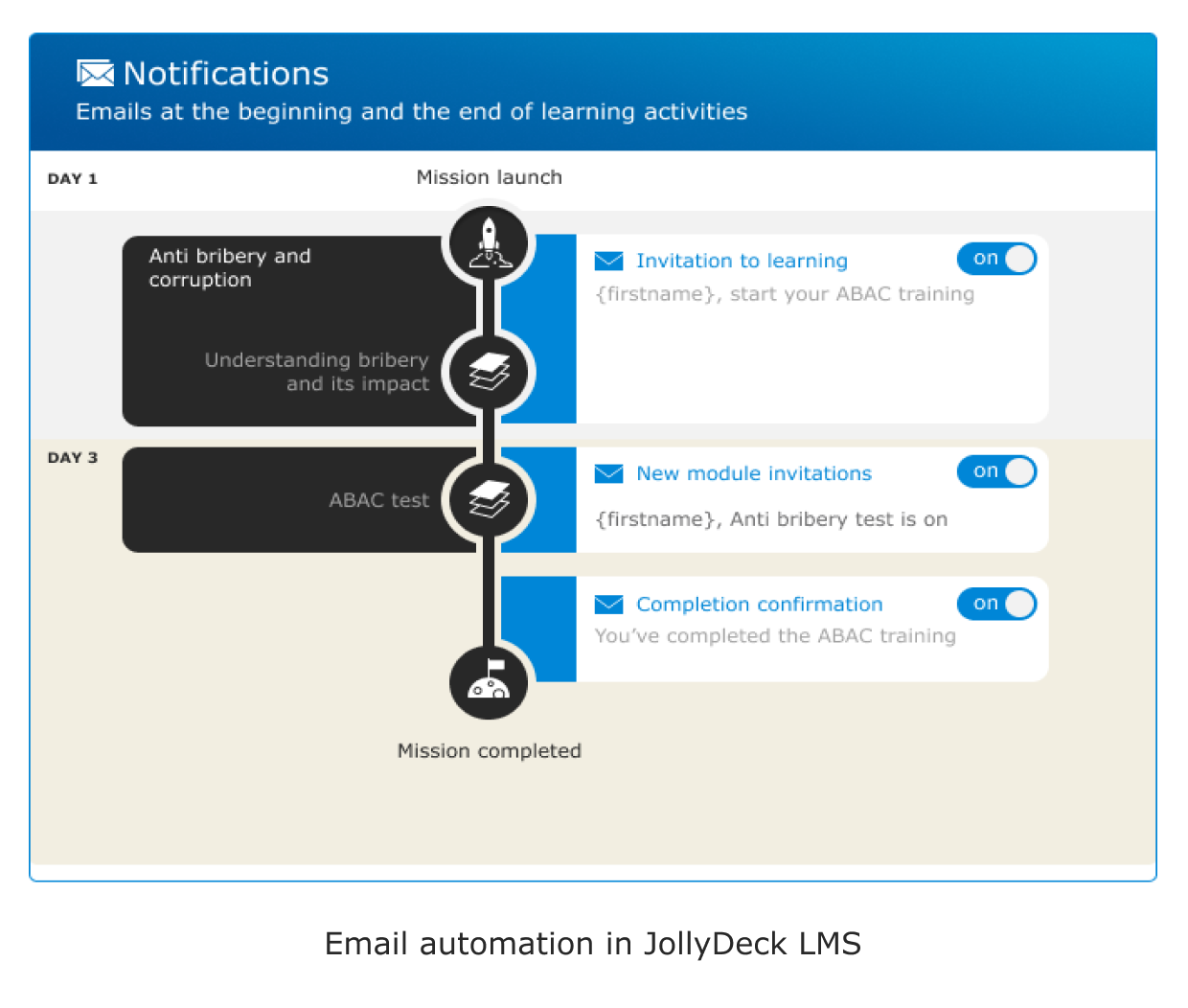
Secondly, you LMS can be a useful tool in delegating jobs and thus syndicating the supervision of learning performance. If, for instance, line managers are able to see who is behind on training in the LMS, it can then fall on them to follow up with individuals and ensure their team completes the training.
As line managers are already the strongest driving force behind employee’s completion rates, it makes sense for them to have the proper insight into their team’s performance at their fingertips.
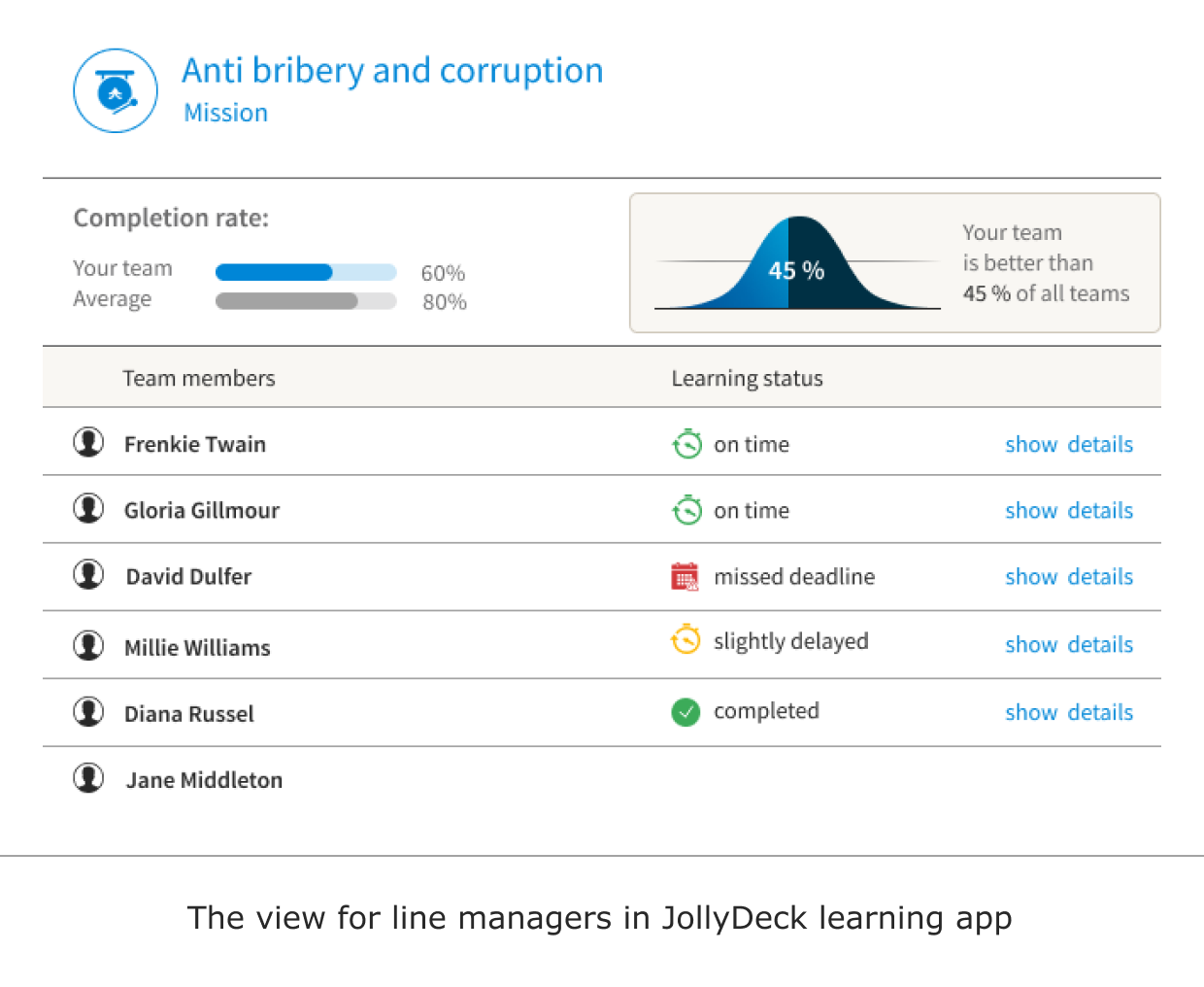
4. Tracking and reporting compliance
In order to properly manage the compliance training, you need to be able to see what is happening, when it is happening. Therefore, you should expect your LMS to show real data in real time.
If there is a sudden need to retrieve the latest reports, requesting it through another business function or external vendor simply won’t do. HR, L&D, compliance officers or higher management will all need or want insights into the progress of the compliance training at some point. Therefore, the LMS should be able to grant access to the data to all who need it.
Likewise, having an audit trail of the compliance training is essential, especially in case of indicidents. The ultimate goal of compliance training is still high completion rates. However, the more data you have collected in addition to who has completed the training the more protected your organisation will be. This means that your LMS should be able to show exactly which training an employee has gone through, when they were introduced to it, how well they did in that training and areas that were made aware of.
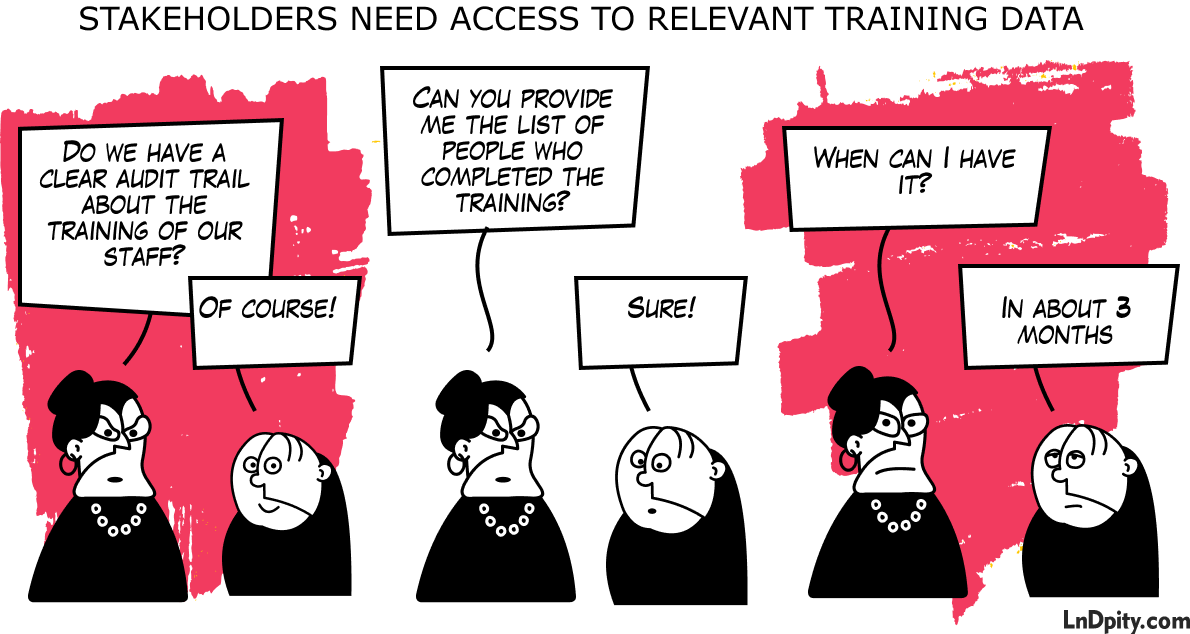
You should also remember that having a large amount of data doesn’t help you much if you can’t quickly generate meaningful insights out of it. Being able to access the right compliance training KPI’s at the point of need is paramount.
An LMS should be capable of sorting out the data for you so you can quickly identify who is yet to complete the training, and dig into the training needs of specific departments, locations and functions throughout the business.
Finally, advanced analytics will allow you to get a more rounded view into the efficiency of your training and analyse any learning gaps that appear in your employees. For example, did one question cause problems throughout your organisation? Or is one department falling short in understanding a specific area of the training?
The deeper you can look into the results, the better you’ll understand your employee’s needs. Nonetheless, you should be able to both dig-deep into this data, and export the reports at your convenience.
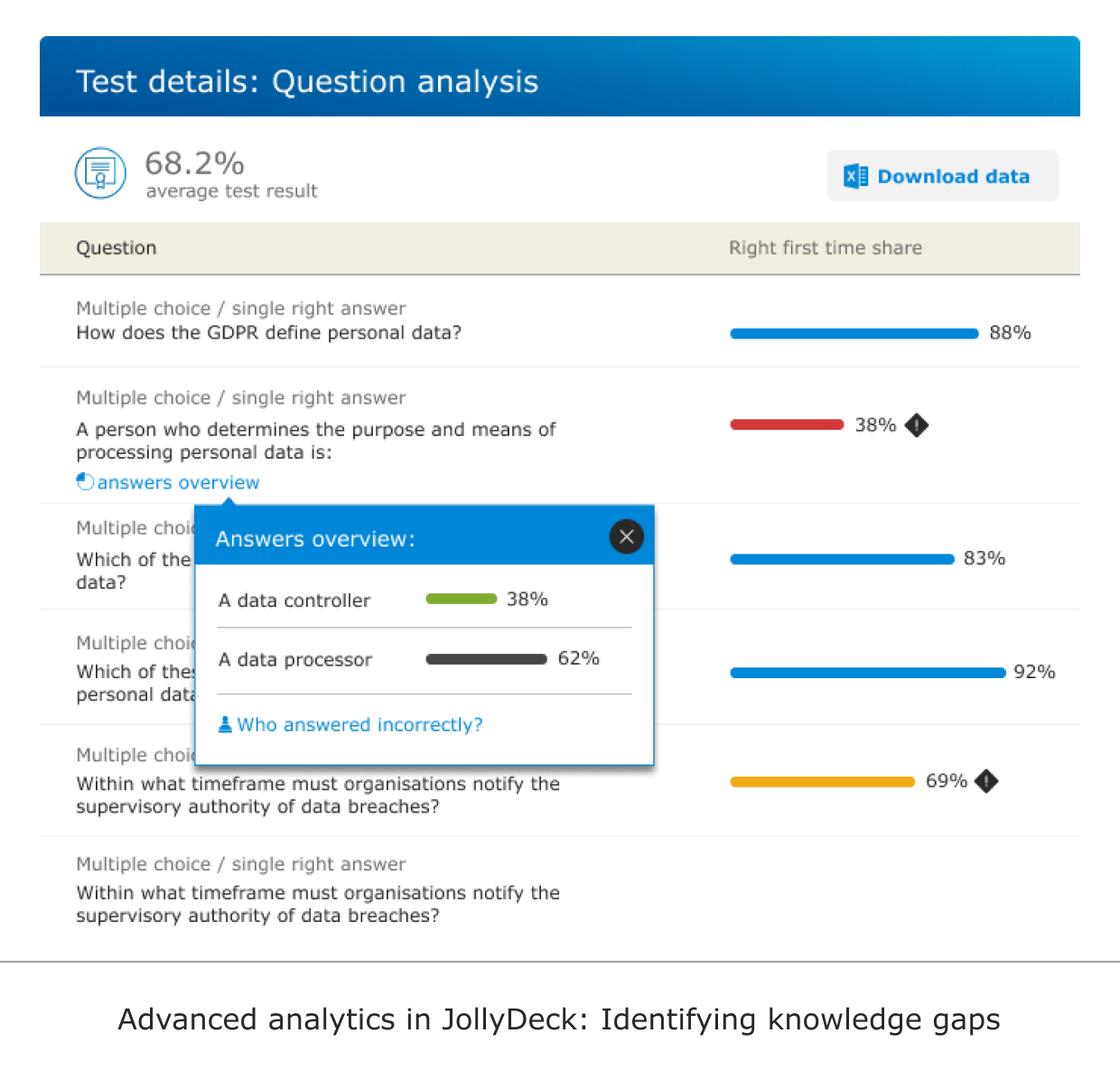
Thinking beyond regulatory requirements
The goal of well-intended compliance training goes beyond satisfying regulatory requirements. Compliance training is about providing efficient training that will result in the appropriate employee conduct throughout the organisation.
See how JollyDeck’s meaningful take on compliance training can help you meet your business objectives, whilst offering engaging and memorable learning to employees.


